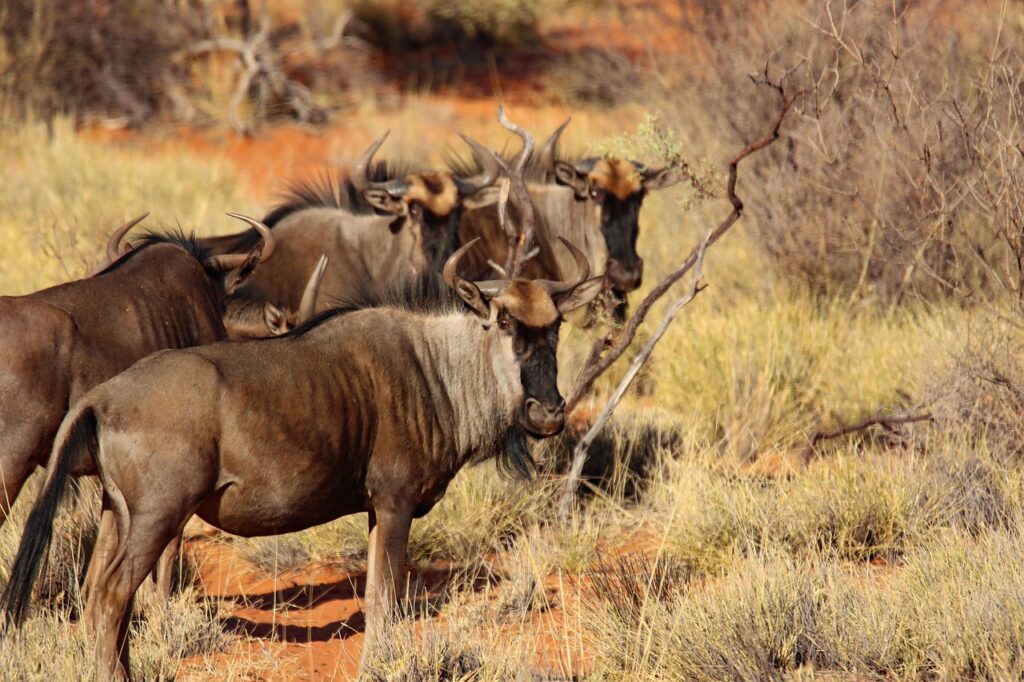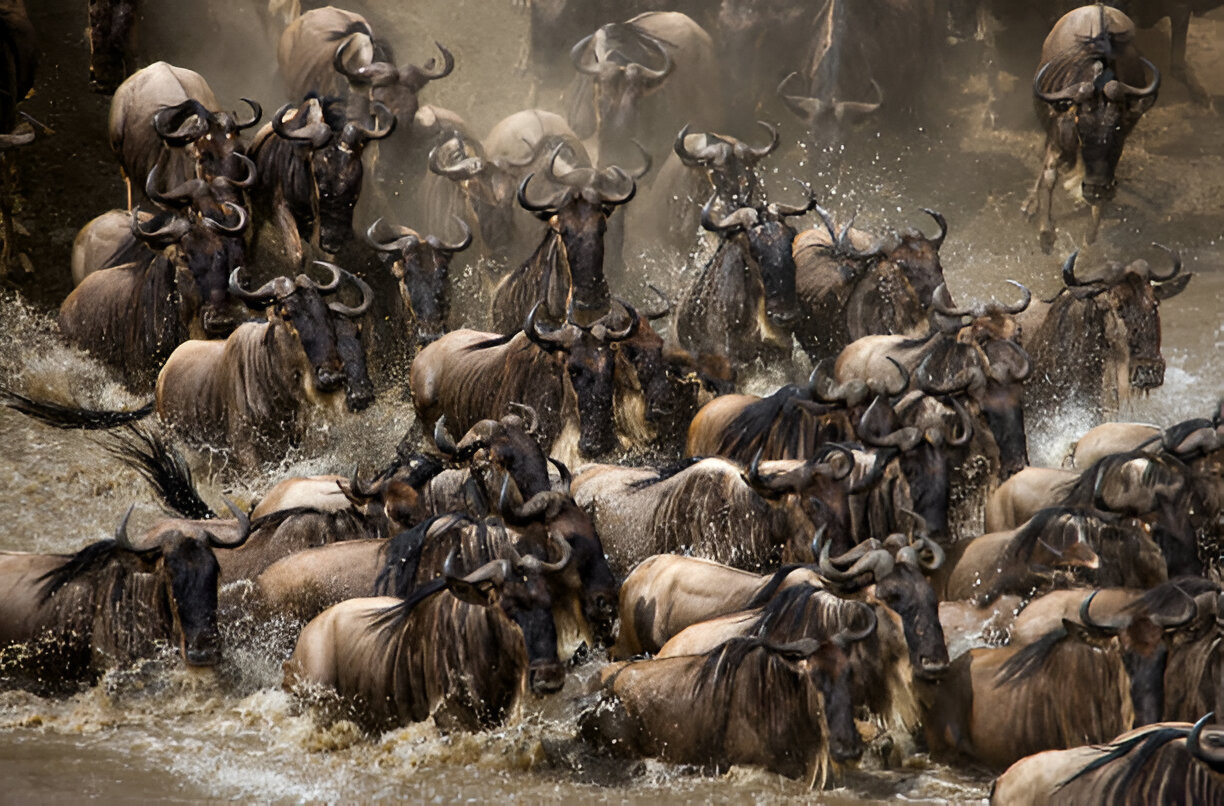
- Tanzania - East Africa
When and Where Can I See the Great Migration? — Complete Tanzania Safari Guide
The Great Migration is one of nature’s most spectacular wildlife events and a once-in-a-lifetime experience for many safari enthusiasts. Every year, over 1.5 million wildebeest, hundreds of thousands of zebras, and gazelles travel across the Serengeti-Mara ecosystem in search of fresh grazing lands and water. But the big question for travelers is: When and where can I see the Great Migration?
If you’re planning a Tanzania safari, timing and location are everything. This guide will give you the complete answer — breaking down the Great Migration months, the best viewing locations, what to expect in each season, and how to plan your trip to witness this awe-inspiring spectacle.
What is the Great Migration?
Before diving into when and where you can see the Great Migration, it’s important to understand what it is.
The Great Migration is a continuous, circular movement of wildebeest, zebras, and gazelles between the Serengeti National Park in Tanzania and the Maasai Mara in Kenya. Unlike the name suggests, it’s not a single event, but rather a year-round cycle following seasonal rains and grass growth.
Along the way, travelers witness dramatic river crossings, predator hunts, and vast herds moving across breathtaking landscapes — making the Great Migration one of the Seven Natural Wonders of Africa.
When Can I See the Great Migration? — Month-by-Month Guide
The exact timing of the Great Migration varies each year, depending on rainfall patterns. However, there is a general timeline that guides safari planning. Here’s when and where you can see the Great Migration during each month:
January – March: Calving Season (Southern Serengeti & Ndutu Area)
Location: Ndutu Plains (Ngorongoro Conservation Area & Southern Serengeti)
Highlights: This is the birthing season when over 500,000 wildebeest calves are born within a few weeks.
What to Expect: Predator activity is intense as lions, cheetahs, and hyenas target the vulnerable young.
Why Visit Now: You’ll witness dramatic wildlife action in short-grass plains, with excellent photographic opportunities.
April – May: Herds Move North (Central Serengeti)
Location: Central Serengeti (Seronera area)
Highlights: The wildebeest begin their slow movement northwards, grazing on the lush grass after the rains.
What to Expect: Fewer tourists, incredible green landscapes, and large concentrations of wildlife.
Why Visit Now: Great for those wanting quieter safari experiences with lower lodge prices.
June – July: Grumeti River Crossings
Location: Western Serengeti & Grumeti Game Reserve
Highlights: The herds gather along the Grumeti River, facing huge Nile crocodiles in dramatic crossings.
What to Expect: Exciting predator-prey encounters and the first major water challenges for the herds.
Why Visit Now: Witness one of the less crowded but still thrilling river crossings.
July – August: Mara River Crossings
Location: Northern Serengeti (Kogatende & Lamai areas)
Highlights: This is when the Great Migration reaches its most iconic moment — the Mara River crossings.
What to Expect: Hundreds of wildebeest plunging into crocodile-filled waters, while big cats stalk nearby.
Why Visit Now: This is peak Great Migration safari season in Tanzania.
September – October: Herds in the Maasai Mara & Northern Serengeti
Location: Northern Serengeti (Tanzania) and Maasai Mara (Kenya)
Highlights: The herds spread out across two countries, offering excellent game viewing in both.
What to Expect: Warm, dry weather with exceptional wildlife sightings.
Why Visit Now: Perfect for those who want fewer rains and high visibility.
November – December: Return South
Location: Eastern Serengeti & Southern Serengeti
Highlights: The herds move south again, following the rains toward calving grounds.
What to Expect: Migratory birds arrive, and the landscape starts turning green.
Why Visit Now: Great for combining the migration with birdwatching.
Chat with our expert direct via email!
Where Can I See the Great Migration? — Key Locations in Tanzania
If you’re asking where can I see the Great Migration, here are the top locations depending on the season:
Ndutu Plains (January–March) — Best for calving season.
Seronera, Central Serengeti (April–May) — Great for relaxed game drives and big cats.
Western Serengeti & Grumeti (June) — Witness Grumeti River crossings.
Northern Serengeti (July–October) — Best for Mara River crossings.
Eastern & Southern Serengeti (November–December) — See the herds returning.
Best Time to See the Great Migration in Tanzania
If your priority is to see dramatic river crossings, aim for July to October in the Northern Serengeti.
If you want calving season and predator action, visit between January and March in Ndutu.
The beauty of the Great Migration is that there’s no bad time to visit — it’s a year-round event, just in different locations.
Tips for Planning Your Great Migration Safari
Book Early: The best lodges in prime locations fill up months in advance.
Choose the Right Region for the Month: Don’t just book “Serengeti” — make sure you’re in the correct sector for the time of year.
Consider a Mobile Camp: These camps move with the herds for optimal sightings.
Hire an Experienced Guide: They know exactly when and where you can see the Great Migration on any given day.
Combine with Other Parks: Add Ngorongoro Crater, Tarangire, or Lake Manyara for a varied safari.
Frequently Asked Questions — When and Where Can I See the Great Migration?
1. Is the Great Migration guaranteed to see?
No, as it depends on rainfall patterns, but experienced guides can maximize your chances.
2. Can I see the Great Migration in Kenya and Tanzania?
Yes. The herds cross between the Serengeti (Tanzania) and Maasai Mara (Kenya) from July to October.
3. How many days should I spend to see it?
At least 4–6 days in the right location is recommended.
4. Is it better to go for calving season or river crossings?
It depends on your interests — calving season offers predator action, while river crossings offer dramatic scenes.
5. What type of safari is best for the Great Migration?
Private safaris, mobile camps, and fly-in safaris are great for flexibility.
Conclusion
The answer to “When and where can I see the Great Migration?” depends entirely on the month you visit and where you base yourself in the Serengeti. Whether you choose to witness the calving season in Ndutu, the Grumeti River crossings, or the Mara River crossings in the north, the Great Migration offers unforgettable wildlife moments at any time of year.
With careful planning, expert guides, and the right timing, you can ensure your Tanzania safari becomes the trip of a lifetime — and you’ll always know exactly when and where to see the Great Migration in all its glory.
📌 Build Your Tour Today!


Olduvai Tours Tan_Africa
We ensure that your journey is not just a trip but a meaningful exploration of Tanzania’s natural and cultural treasures. Let us turn your dream safari into reality!
Booking your Adventure with Olduvai Tours Tan Africa
Olduvai Tours Tan Africa specializes in creating unforgettable Tanzania safari experiences, offering expert guides, personalized itineraries, and high-quality service.
Other Tours You May book with Olduvai Tours Tan_Africa:
Tanzania – East Africa Is It Possible to Do a Day Trip to a Park from Arusha? Arusha is…
Book 4 Days Tanzania Luxury Safari Itinerary Book Your 4 Days Luxury Safari Package! Tour Package Details 📍 Tarangire…
Affordable Group Joining Safari in Tanzania 2025 – Budget-Friendly 📍 Serengeti National Park, Ngorongoro Crater and Tarangire National Park…

